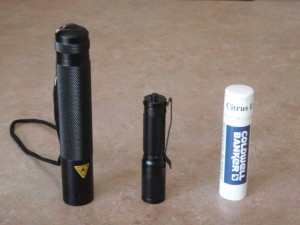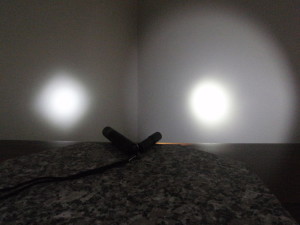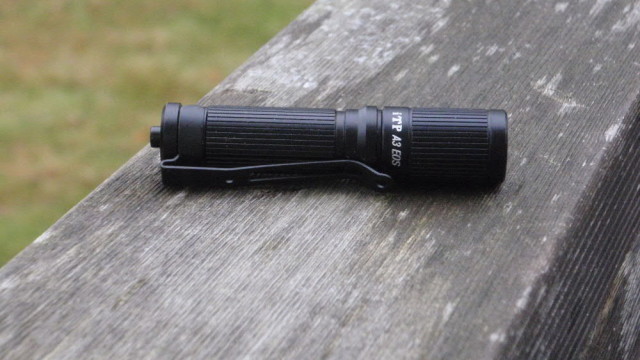Ask my family…I’m a total flashlight buff. They almost invariably get the latest in their stockings at Christmas. At $23, this one is a little out of my stocking stuffer price range, but I’m recommending that they spend their own money on it!
LED lights are a no-brainer for emergency kits thanks to the durability of the LED over any standard bulb, plus the dramatically higher efficiency that saves batteries. My emergency kit flashlight for a couple of years now has been the Coast LED Lenser. It’s small, light, and bright; and of course it’s waterproof. But when I saw the ITP A3 EOS at Battery Junction, I had to give it a try.
There are two versions of this light, “standard” ITP A3 EOS and the “upgrade” ITP A3 EOS
. The standard has one light level; the upgrade has switching for 3 different levels so you can choose the amount of light you want with the longer battery life of a lower level. Great idea, but in an emergency kit, simplicity rules. One more switch is one more thing to break.
In it came…I knew it was going to be small, but I absolutely wasn’t prepared for just HOW tiny it is. Take a look at the photo…it’s smaller than a lip balm! And WITH the battery, it’s under one ounce. Let me put that a different way…it’s lighter than the battery for the LED Lenser. With two spare batteries, it’s lighter than the other with no spares, and takes up less space.

Obviously, the performance suffers, right? Wrong. This light is better in every way. First, it’s BRIGHTER, subjectively roughly twice as bright as the Lenser. Second, the light is whiter, more like daylight. Third, the beam pattern is broader, well focused in the center, with more around the edges to cover more area.

Final analysis…flawless. Tiny, bright, with a (removable) pocket clip to allow you to attach it somewhere and keep it from rolling, this is a no-brainer for my backpacking emergency kit (for your car, you might want to consider other options). To paraphrase Lee Iacocca, if you can find a better light, buy it!



[…] Next, put together an emergency kit. With any luck you’ll never have to use it, but it can save your your trip, your mood, your sanity, and maybe even your life if a worst-case situation happens (you know, the ones you read about in the supermarket tabloids…”Family eats dog and father’s left arm to survive blizzard inside car.”). It doesn’t have to be elaborate, but pay attention to the key things: light, heat, calories, and water. Here’s the basic list…get it all together, find a compartment that it all fits in reasonably snugly, and put it somewhere that you can find easily in the dark without a flashlight in a snowstorm! You don’t want to have to be digging around for it if you really ARE in an emergency situation (although it’s a good idea to have a flashlight in your glove compartment, too; even if you don’t have much room, you can find a home for this one). […]